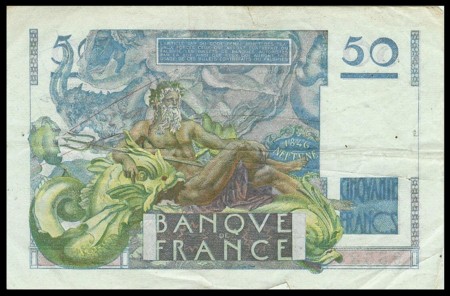FRANCE
Urbain Le Verrier

Urbain Le Verrier was born on March 11, 1811 in Saint-Lo in Normandy. He attended his higher education in 1831 at the Ecole Polytechnique near Paris, and even studied chemistry under Gay Lussac, whom we all are indebted to for his calculations which give us Alcohol by Volume. Le Verrier did not stay long with chemistry however, and switched to the study of Astronomy, where he found his niche.
In 1837 he became a professor of astronomy at the Ecole Polytechnique, where he began studying the movements of planets, beginning with Mercury. In 1845 he began to study the orbit of the planet Uranus, which had a variation that could not be accounted for using Isaac Newton’s Gravitational Laws. Le Verrier’s calculations on this orbit led him to believe that there could be another planet beyond Uranus, and that planet’s gravitational pull accounting for the variation in Uranus’ orbit. To confirm his calculations, Le Verrier sent them to another astronomer, Johann Gottfried Galle, in Berlin. Because Le Verrier’s mathematical work was so precise, Galle was able to spot the newly discovered planet Neptune in less than an hour from starting his search on September 23, 1846.
Le Verrier was understandably excited about this news, but as with so many discoveries, there was another claim made by an English astronomer, John Couch Adams. Though there was a dispute as to the actual discoverer of Neptune being played out in the papers, it was clear that Le Verrier was the one who first published his results and had the better methods, including mathematics, star charts and contemporaries such as Galle in Berlin, who could quickly confirm his theory.
This discovery spurred Le Verrier to undertake a monumental task of gathering the entire known theories of the solar system into one publication: “The records of the Paris Observatory” (Annales de L’Observatoire de Paris) was over 4,000 pages and was his last accomplishment, being completed one month before he passed away.
Le Verrier accepted a position with the Paris Observatory in 1854. The Observatory however was then in a poor state. Le Verrier instilled a rigorous scientific method that re-established it as a reputable observatory, but his style of management was not appreciated by all and he was unpopular with many persons there. Even so, he was selected as the director of the observatory, serving from 1854-1870 when, due to his poor management he was removed from his position. His successor unfortunately drowned in an accident and Le Verrier was reinstated as the director in 1873, serving until his death in 1877.
In 1859 Le Verrier again started looking at Mercury and its own variances in its orbit which he noticed when he had first started studying the planet back in 1845. Theorizing that the anomaly could best be attributed to the existence of an asteroid belt between Mercury and the Sun, a new planet, Vulcan, was postulated, but was never confirmed.
Mercury’s orbit wasn’t explained until 1915 when Albert Einstein’s Theory of General Relativity was introduced, and it was immediately agreed that it could prove the precession (wobble) of Mercury’s orbit, thus disproving Le Verrier’s idea of an asteroid belt or another planet.
Urbain Le Verrier suffered from Liver disease and for the last five years of his life, he was in great pain before it finally took his life on September 23, 1877, exactly 31 years after his discovery of Neptune was verified. He has had several honors bestowed on him for his works, most notable of which include twice being awarded the Gold Medal of the Royal Astronomical Society: In 1868 and again in 1876, craters on the Moon as well as on Mars are also named after him. He is also one of 72 notable Frenchmen who have had their names placed onto the first balcony of the Eiffel Tower (fourth inscription on the North-East side). His portrait was also on the 50 Franc banknote, issued from 1946-1951. The reverse of this note shows an amazing depiction of the Roman god of the sea, Neptune and the year of his planet’s discovery, 1846.

